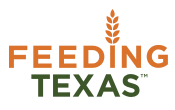Texas grocery stores are bustling places this time of year, as hordes of shoppers stock up for holiday meals. You’re probably one of them.
So imagine waiting in line with your purchases, reaching for your wallet and suddenly discovering you’re $36 short.
For most of us, this would be an annoyance. But for a family on a tight food budget, $36 could mean the difference between a warm holiday dinner and a cold, empty plate this season.
On Nov. 1, 4 million Texans saw a big chunk of their monthly food budget disappear overnight when a largely unpublicized change to the federal SNAP, or food stamp program, took effect. The change was immediate and irreversible.
Its impact will be greater food insecurity across our state, missed family meals and increased pressure on already stressed charities.
Ironically, this cut will take food off the table at the very time of year when Texans typically do the most for their struggling neighbors. Canned food drives, volunteer events and donations to food banks usually spike over the holidays, perhaps because no one feels right enjoying the season’s abundance when some of their neighbors are going without.
The Nov. 1 cut is the result of a premature end to a boost in food stamp benefits that was part of the 2009 Recovery Act. The boost was intended to support families hurt by the recession as it infused struggling local economies with federal aid.
Economists say the additional benefits reduced food insecurity nationwide and generated $1.70 in economic return for every extra dollar of food stamps spent locally.
Congress cleverly designed the boost to continue until overtaken by inflation, providing the support families needed at the time while ensuring a soft landing for hungry families when the economy recovered.
But as with many carefully crafted policy initiatives, cleverness and compassion took a back seat to politics in 2010 when Congress voted to end the boost early. Fast forward three years to an economy still struggling to recover and no change in the number or rate of Americans in poverty.
Despite this ongoing hardship for millions of Americans, the hunger clock struck on Nov. 1 for 4 million Texans. A Texas family of four faces an average decrease of $36 dollars in monthly food aid as a result.
The cut will result in $411 million in lost federal aid over the next 11 months. Congress is considering another round of even deeper SNAP cuts as part of the federal farm bill.
Food banks are known for their tireless efforts to fill in the gaps faced by our fellow Texans. We’re proud to offer an opportunity for Texans to nourish their struggling neighbors. But what is less understood is that food banks and food stamps are part of the same system of hunger relief — donating to one while supporting cuts to the other is counter-productive.
Over the next year, with the help of our donors and volunteers, our 21 food banks will distribute enough food for 250 million meals. The Nov. 1 SNAP cut will take 180 million meals off many of the same tables.
You can help your hungry neighbors this holiday season by supporting your local food bank.
But you can help them for many holidays to come by reminding Congress of how valuable SNAP is to your neighbors in need.
